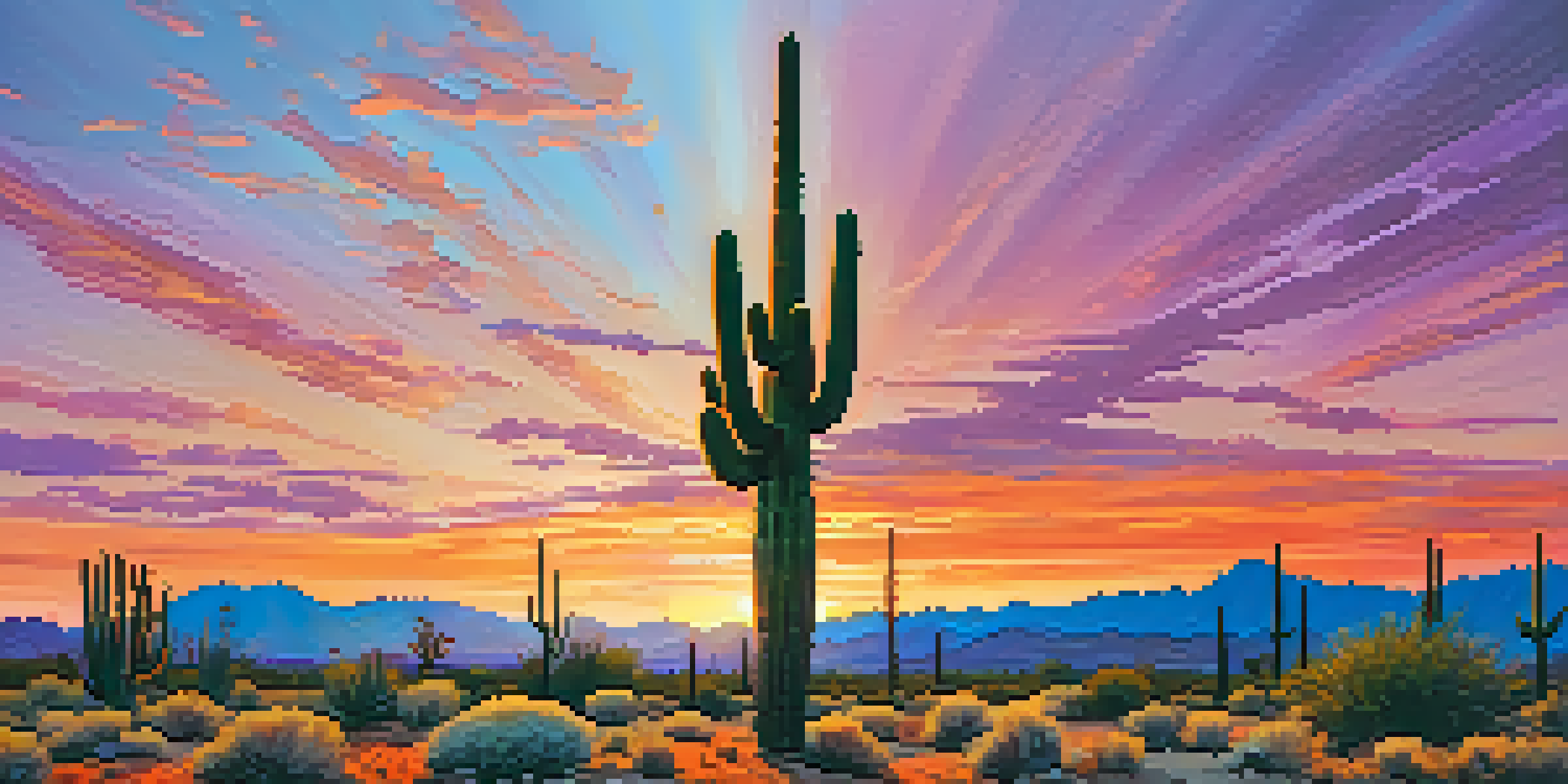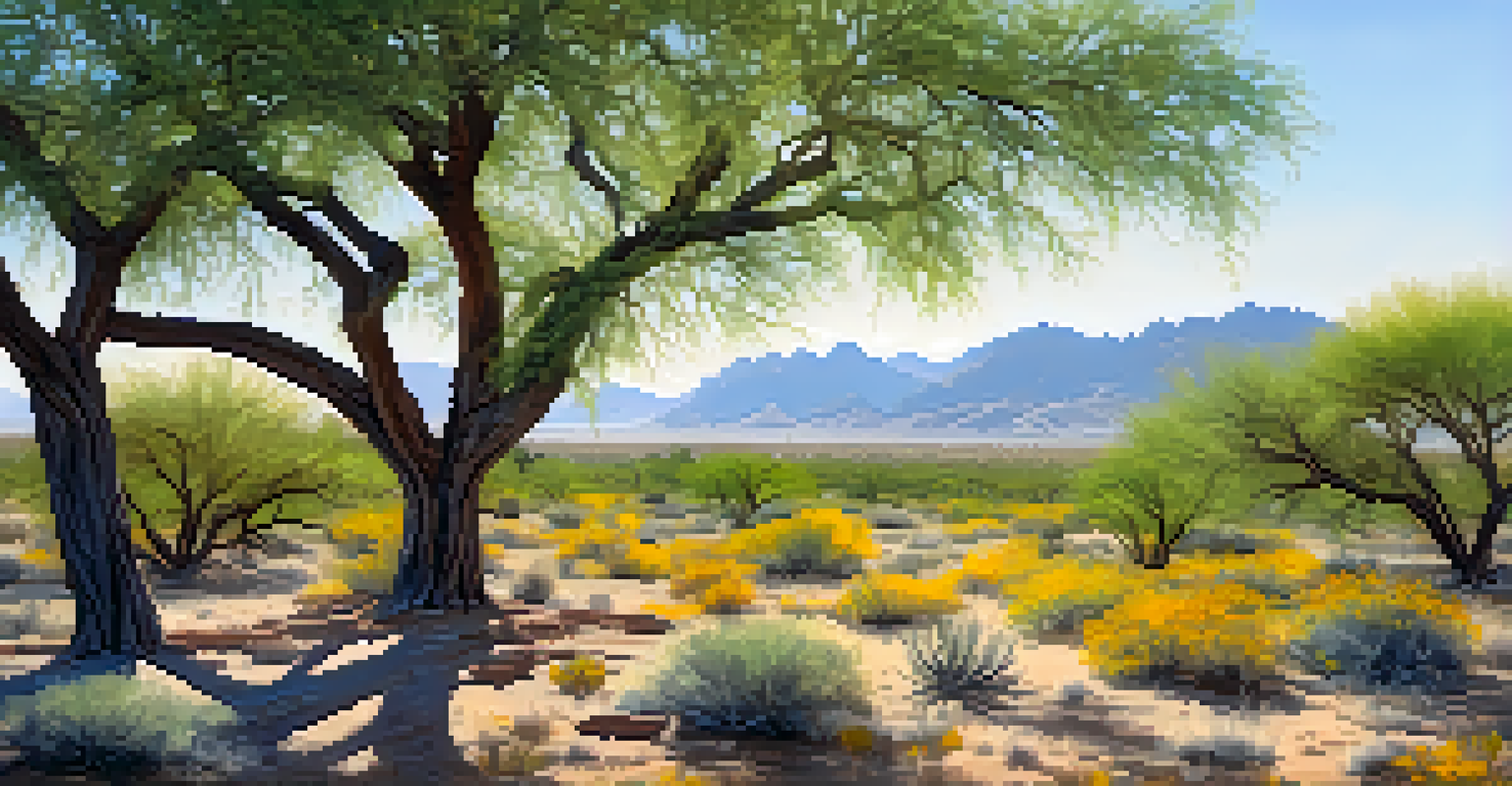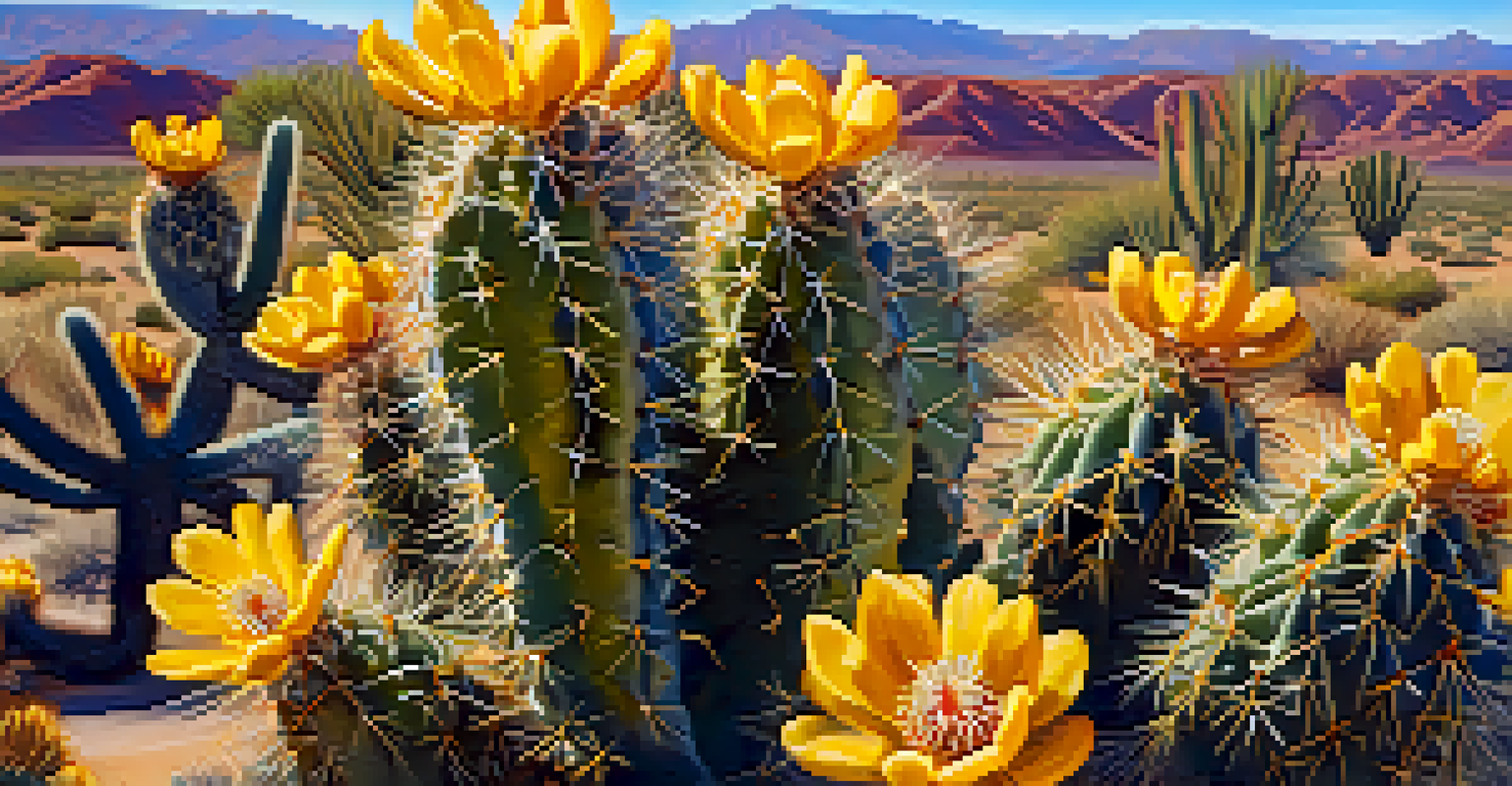Exploring the Unique Flora of Scottsdale: Native Plant Species

Introduction to Scottsdale's Unique Ecosystem
Scottsdale, Arizona, is renowned for its stunning desert landscape, teeming with unique flora. The region's arid climate and diverse habitats create a haven for native plants, each adapted to survive in challenging conditions. Exploring these native species offers not just a glimpse into the resilience of nature but also highlights the importance of biodiversity in this desert ecosystem.
In every walk with nature, one receives far more than he seeks.
The Sonoran Desert, where Scottsdale is located, is one of the most biodiverse deserts in the world. It features a wide array of plants that have adapted over time to thrive in an environment characterized by extreme temperatures and limited rainfall. Understanding these plants can foster a deeper appreciation for the region’s natural beauty and ecological significance.
As we dive into the various native plant species, we'll uncover their unique characteristics and the vital roles they play in maintaining the balance of the local ecosystem. From striking cacti to vibrant wildflowers, each plant tells a story of survival and adaptation in a harsh yet beautiful environment.
Iconic Cacti of Scottsdale: A Closer Look
When you think of desert flora, cacti are likely the first plants that come to mind. In Scottsdale, the Saguaro cactus stands tall as a symbol of the Southwest, reaching heights of up to 40 feet and living for over 150 years. These iconic giants are not just visually stunning; they also play a crucial role in the local ecosystem, providing shelter and food for various wildlife.

Another notable cactus is the Cholla, with its distinctive segmented arms. The Teddy Bear Cholla, in particular, is notorious for its barbed spines that can easily latch onto unsuspecting passersby. Despite its prickly reputation, it produces beautiful flowers that attract pollinators, showcasing the delicate balance between beauty and danger in the desert.
Scottsdale's Rich Biodiversity
The unique desert ecosystem of Scottsdale is home to a diverse range of native plants that play crucial roles in maintaining ecological balance.
Cacti not only add to the visual landscape but also contribute significantly to water conservation. By storing water in their fleshy stems, they are perfectly equipped to survive long periods of drought, making them essential players in the desert ecosystem. Observing these remarkable plants in their natural habitat is a must for any nature enthusiast.
Mesquite Trees: The Lifeblood of the Desert
The Mesquite tree is another native species that thrives in Scottsdale's harsh environment. Known for its deep roots, this tree can access groundwater sources, making it a vital resource for other plants and animals during dry spells. With its lush green foliage, the Mesquite provides shade and sustenance, helping to maintain the delicate balance of desert life.
The earth has music for those who listen.
Mesquite trees also have cultural significance; they have been used by indigenous peoples for food, medicine, and crafting materials for centuries. Their pods are edible and can be ground into flour, showcasing how native plants can be both beautiful and practical. This tree embodies the spirit of survival and resourcefulness that characterizes many desert species.
Additionally, Mesquite trees serve as a crucial habitat for various birds and insects, offering nesting sites and food. Their presence in the landscape is a reminder of the interconnectedness of life in the desert, highlighting how each species contributes to the overall health of the ecosystem.
The Beauty of Wildflowers in Scottsdale
While cacti and trees often steal the spotlight, Scottsdale is also home to a plethora of vibrant wildflowers that bloom in the spring. Species like the Desert Marigold and the California Poppy paint the landscape with their bright colors, creating a striking contrast against the arid backdrop. These flowers not only add beauty but also play a critical role in supporting pollinators like bees and butterflies.
The blooming of wildflowers is a seasonal spectacle that attracts locals and tourists alike, making it a prime time for nature walks and photography. Their short-lived yet breathtaking displays remind us of the transient beauty of life in the desert. Observing these blooms can inspire a sense of wonder and appreciation for the resilience of nature.
Importance of Native Plants
Native plants are vital for supporting local wildlife, requiring fewer resources, and contributing to sustainable landscaping.
Moreover, wildflowers have adapted to thrive in harsh conditions, often germinating only after a rain. Their ability to quickly establish roots and bloom showcases the incredible adaptability of desert flora. By learning about these wildflowers, we can better understand the complexities of desert ecosystems and the importance of conservation.
Succulents: Nature's Water Savers
Succulents are another fascinating category of plants found in Scottsdale, known for their fleshy leaves that store water. The Agave plant, for example, is not only striking in appearance but also incredibly resilient, thriving in arid conditions. Many succulents have evolved to endure extensive drought periods, showcasing nature's incredible adaptability.
In addition to their water conservation capabilities, succulents offer a variety of uses. The sap of the Agave has been traditionally used to create beverages like tequila, while the plant itself can be a source of fibers for weaving. This dual-purpose aspect of succulents highlights how native plants can enrich human life while thriving in their natural environment.
Succulents also contribute to the aesthetic appeal of gardens and landscapes in Scottsdale. Their diverse shapes and colors can transform any space, making them popular choices for both residential and commercial landscaping. Understanding the role of succulents in the local ecosystem enhances our appreciation for their beauty and practicality.
The Role of Native Plants in Ecosystem Health
Native plants are fundamental to the health of Scottsdale's ecosystem. They provide essential habitats and food sources for local wildlife, helping to maintain biodiversity. By supporting a variety of species, these plants contribute to a balanced ecosystem that can better withstand environmental changes and disturbances.
Moreover, native plants require fewer resources to thrive compared to non-native species, making them more sustainable choices for landscaping. They are adapted to local soils and climates, meaning they need less water and fertilizer, which is especially important in arid regions. By choosing native plants, residents can create beautiful gardens that are environmentally friendly and cost-effective.
Conservation is Key
Community engagement and conservation efforts are essential for protecting Scottsdale's flora from threats like urban development and invasive species.
The preservation of native flora is crucial not only for wildlife but also for the community. Educational programs and conservation efforts focused on these plants can foster a greater understanding of the local environment, encouraging stewardship and responsible land use. By valuing and protecting native plants, we contribute to the overall health and resilience of Scottsdale's ecosystem.
Conservation Efforts for Scottsdale's Flora
Conservation initiatives are vital for protecting Scottsdale's unique flora from threats such as urban development and invasive species. Local organizations and government programs focus on restoring native habitats and promoting the use of native plants in landscaping. These efforts ensure that future generations can enjoy the beauty and benefits of Scottsdale's native flora.
Community engagement plays a significant role in these conservation efforts. Educational programs, workshops, and volunteer opportunities allow residents to learn about native plants and participate in restoration projects. By fostering a sense of connection to the land, these initiatives inspire individuals to take action and advocate for the protection of local ecosystems.

Ultimately, conservation is not just about preserving individual species; it’s about maintaining the intricate web of life that depends on them. By supporting native flora, we are safeguarding the health of our environment and the well-being of our community. Every effort counts, and together we can make a difference in protecting Scottsdale's unique plant heritage.
Conclusion: Embracing Scottsdale's Natural Heritage
Exploring the unique flora of Scottsdale offers a glimpse into the beauty and resilience of desert life. From iconic cacti to vibrant wildflowers, each plant species contributes to the rich tapestry of the local ecosystem. By appreciating and understanding these native plants, we can foster a deeper connection to the environment that surrounds us.
Embracing Scottsdale's natural heritage also means advocating for the protection and preservation of these invaluable resources. Whether through conservation efforts or simply choosing to plant native species in our own gardens, we can all play a role in safeguarding the unique flora of this region. Every small action can lead to significant positive changes for our environment.
In the end, the flora of Scottsdale is more than just a collection of plants; it is a testament to the resilience and beauty of nature. By exploring and celebrating this unique flora, we honor the intricate relationships that exist within our ecosystem, paving the way for a sustainable future for both our community and the natural world.